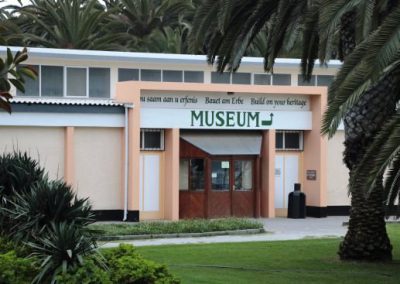
The Scientific Society Swakopmund
Founded in 1968, the Scientific Society Swakopmund is the governing body of the Swakopmund Museum and the Sam Cohen Library. The Society collects, preserves and exhibits cultural goods and scientific objects. It serves furthermore as a platform to share scientific information through lectures, excursions, information distribution and publications. The director of the Namibian Uranium Institute serves as the chairperson of the board of the Scientific Society Swakopmund. The Scientific Society Swakopmund was originally a regional subgroup of the Scientific Society in Windhoek, and founded in1951 to establish the Swakopmund Museum and secure its financial support. In 1968 the subgroup opted to become autonomous and the Society for Scientific Development, Swakopmund was established to optimise its administration and secure its importance at the coast. In 2006 the society was renamed Scientific Society Swakopmund. The Society owns the beautifully renovated national heritage buildings of the Otavi Railway Station and the Omeg House.
The Swakopmund Museum was founded in 1951 by Dr. Alfons Weber. It is the largest privately run museum in Namibia. On display are various types of indigenous plants, animals, minerals, an archaeological exhibition, a geological exhibition, the old transport system, and a variety of cultural historical objects. The exhibition “People of Namibia” is one of a kind. It focuses on the traditional heritage of the different ethnic groups of Namibia.
The Sam Cohen Library was officially opened in 1977. Being a reference library, it hosts approximately 10 000 books, which include the Africana Collection of Ferdinand Stich, former bookshop owner of Swakopmund. The archives, forming a part of the library, contain a collection of newspapers from 1898 up to present-day Namibia as well as a comprehensive collection of historic photographs, postcards, maps and documents. The extensive collection of documents in the Sam Cohen Library is used by a variety of researchers.




